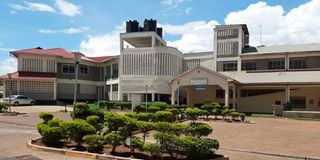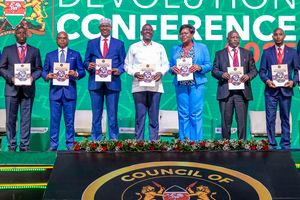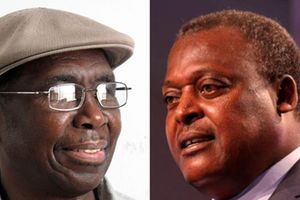Premium
Two dead, 33 injured during anti-govt protests in Kisumu

Jaramogi Oginga Odinga Teaching and Referral Hospital in Kisumu City. Two people died while receiving treatment at the facility following anti-government protests in the region on Wednesday, July 19.
Two people have died and 33 others have been injured following anti-government protests in Kisumu on Wednesday.
The two deaths bring the death toll to four since the protests began two weeks ago.
The victims were rushed to the Jaramogi Oginga Odinga Teaching and Referral Hospital (JOOTRH) on Wednesday after sustaining gunshot wounds to the abdomen and legs.
The hospital's chief executive officer, Dr George Rae, said the two died while receiving treatment at the regional facility.
"The two were brought to our facility after sustaining injuries to the abdomen," Dr Rae said, adding that they were brought to the hospital in a critical condition.
The hospital director said the bodies had since been taken to the hospital mortuary for post-mortem examination.
"A number of the injured are in critical condition, but most have been stabilised and are responding to treatment," Dr Rae said.
Residents say more deaths may have gone unreported because of the ongoing chaos, with some bodies being taken to unidentified morgues.
A Kisumu-based human rights activist, Mr Bonface Akatch, said he had recorded a total of nine deaths since the protests began on 7 July.
In an interview, the activist claimed that they had also recorded 78 injuries, 41 of which were gunshot wounds.
"We also have cases of residents who reported being attacked and injured by criminals who are now taking advantage of the situation," Mr Akach said.
The activist raised concerns about police brutality and said plans were underway to organise demonstrations against the security agencies on Tuesday.
"The police are no longer using rubber bullets, we have noticed that they are using live bullets which is dangerous for the protesters," he said.
"We are worried about the increasing number of deaths and injuries; we also have cases of police forcibly removing bullets from dead victims to avoid being exposed," Mr Akach alleged, adding that some of the dead had more injuries around the bullet wounds.
Last week, two residents, Derrick Adongo, 25, and Fanuel Ochieng, 18, succumbed to gunshot wounds after being caught up in the anti-government demonstrations.
In Homa Bay, six people were admitted to the County Teaching and Referral Hospital with various forms of injuries sustained during the anti-government demonstrations in Homa Bay town on Thursday.
The six include four men and two women, all of whom said they were not part of the group protesting but were simply caught between demonstrators and police.
Two men had bullet holes in their thighs.
One of them was identified as Mr Abdi Rashid.
He said he was at home when he was shot.
"I was repairing my door when a group of officers stormed into my compound and shot me. They were chasing some protesters who had passed by," he said.
Mr Rashid didn't realise he had been shot.
He said he only saw blood on his trousers.
"I went to the hospital on a motorbike," he said.
Peter Ogola, the hospital's director, said the two patients with gunshot wounds were taken for X-rays, which confirmed the same thing.
"They had foreign objects lodged in their bodies. They will be taken to the theatre for further treatment," he said.
The doctor said all the patients were in stable condition.
He said they would be discharged soon.
The injured were taken to the hospital in a Kenya Red Cross ambulance.





